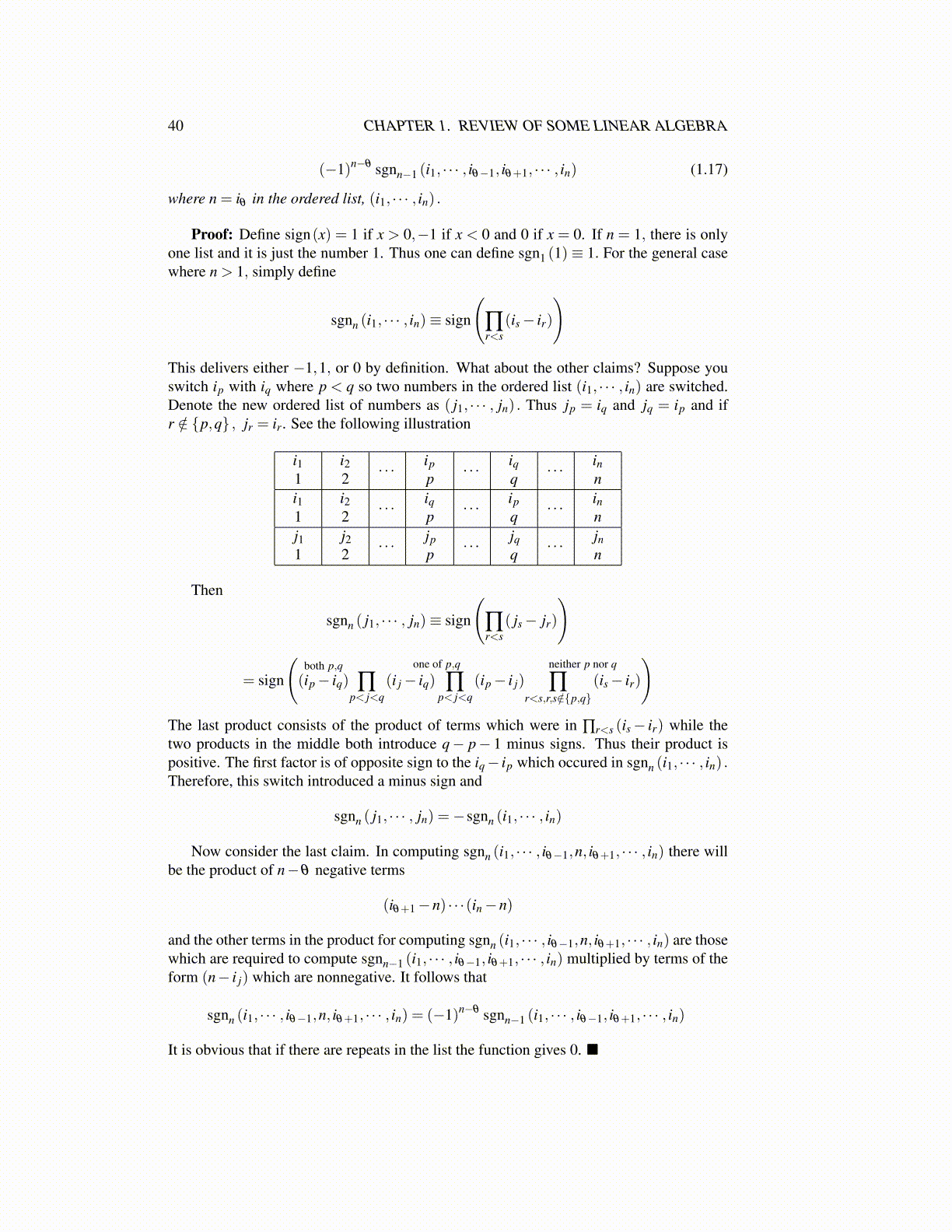
40 CHAPTER 1. REVIEW OF SOME LINEAR ALGEBRA
(−1)n−θ sgnn−1 (i1, · · · , iθ−1, iθ+1, · · · , in) (1.17)
where n = iθ in the ordered list, (i1, · · · , in) .
Proof: Define sign(x) = 1 if x > 0,−1 if x < 0 and 0 if x = 0. If n = 1, there is onlyone list and it is just the number 1. Thus one can define sgn1 (1)≡ 1. For the general casewhere n > 1, simply define
sgnn (i1, · · · , in)≡ sign
(∏r<s
(is− ir)
)
This delivers either −1,1, or 0 by definition. What about the other claims? Suppose youswitch ip with iq where p < q so two numbers in the ordered list (i1, · · · , in) are switched.Denote the new ordered list of numbers as ( j1, · · · , jn) . Thus jp = iq and jq = ip and ifr /∈ {p,q} , jr = ir. See the following illustration
i11
i22 · · · ip
p · · · iqq · · · in
ni11
i22 · · · iq
p · · · ipq · · · in
nj11
j22 · · · jp
p · · · jqq · · · jn
n
Then
sgnn ( j1, · · · , jn)≡ sign
(∏r<s
( js− jr)
)
= sign
(both p,q(ip− iq)
one of p,q
∏p< j<q
(i j− iq) ∏p< j<q
(ip− i j)neither p nor q
∏r<s,r,s/∈{p,q}
(is− ir)
)The last product consists of the product of terms which were in ∏r<s (is− ir) while thetwo products in the middle both introduce q− p− 1 minus signs. Thus their product ispositive. The first factor is of opposite sign to the iq− ip which occured in sgnn (i1, · · · , in) .Therefore, this switch introduced a minus sign and
sgnn ( j1, · · · , jn) =−sgnn (i1, · · · , in)
Now consider the last claim. In computing sgnn (i1, · · · , iθ−1,n, iθ+1, · · · , in) there willbe the product of n−θ negative terms
(iθ+1−n) · · ·(in−n)
and the other terms in the product for computing sgnn (i1, · · · , iθ−1,n, iθ+1, · · · , in) are thosewhich are required to compute sgnn−1 (i1, · · · , iθ−1, iθ+1, · · · , in) multiplied by terms of theform (n− i j) which are nonnegative. It follows that
sgnn (i1, · · · , iθ−1,n, iθ+1, · · · , in) = (−1)n−θ sgnn−1 (i1, · · · , iθ−1, iθ+1, · · · , in)
It is obvious that if there are repeats in the list the function gives 0. ■